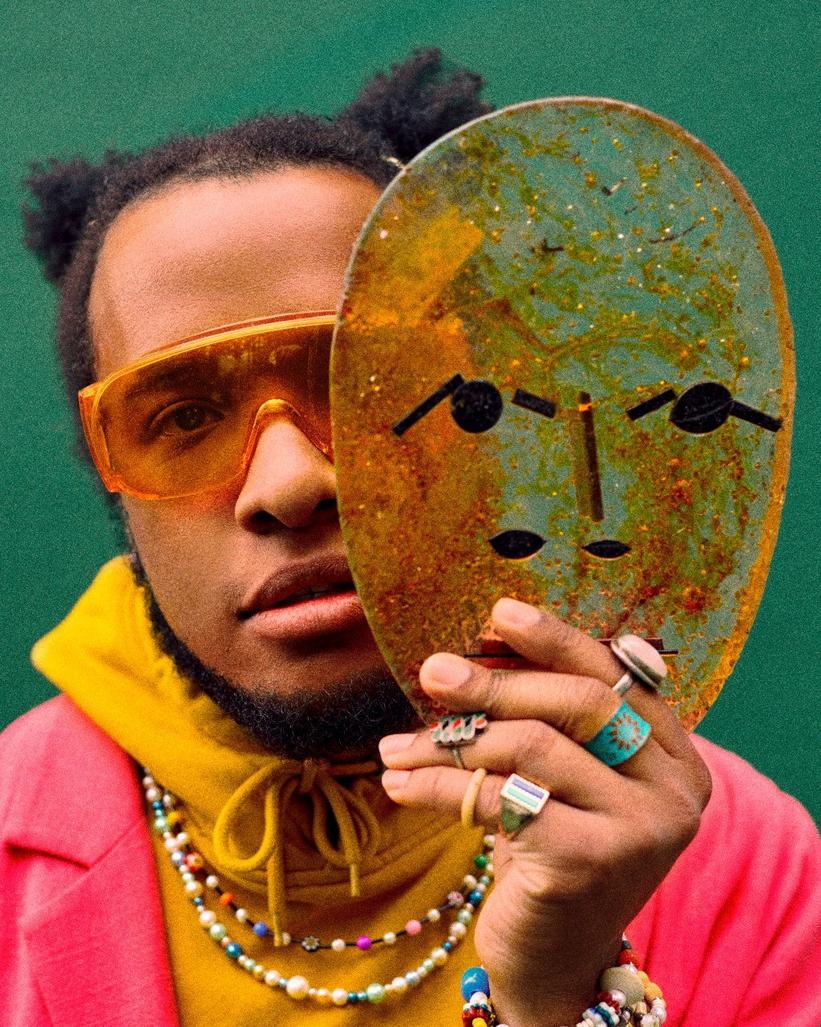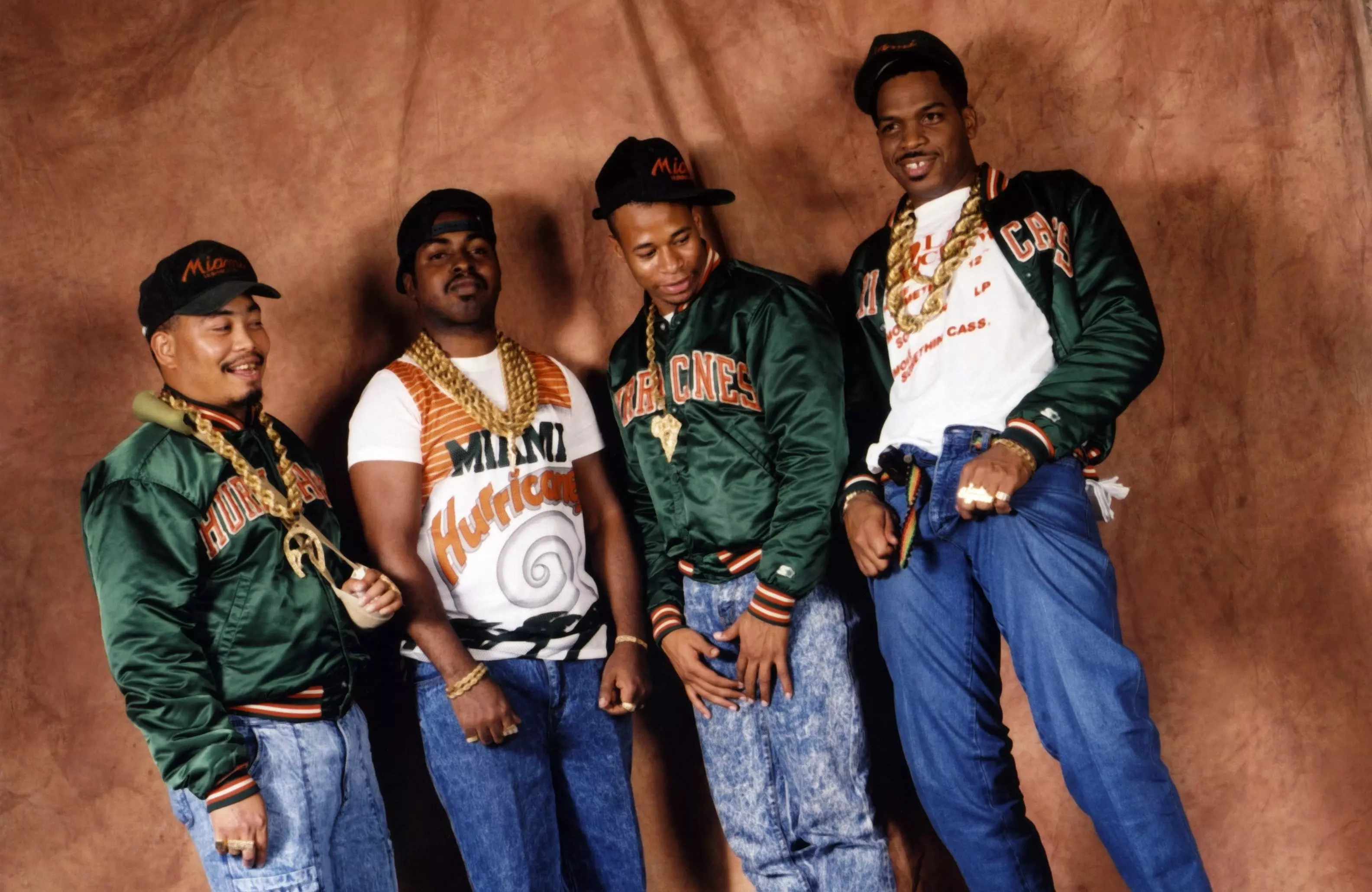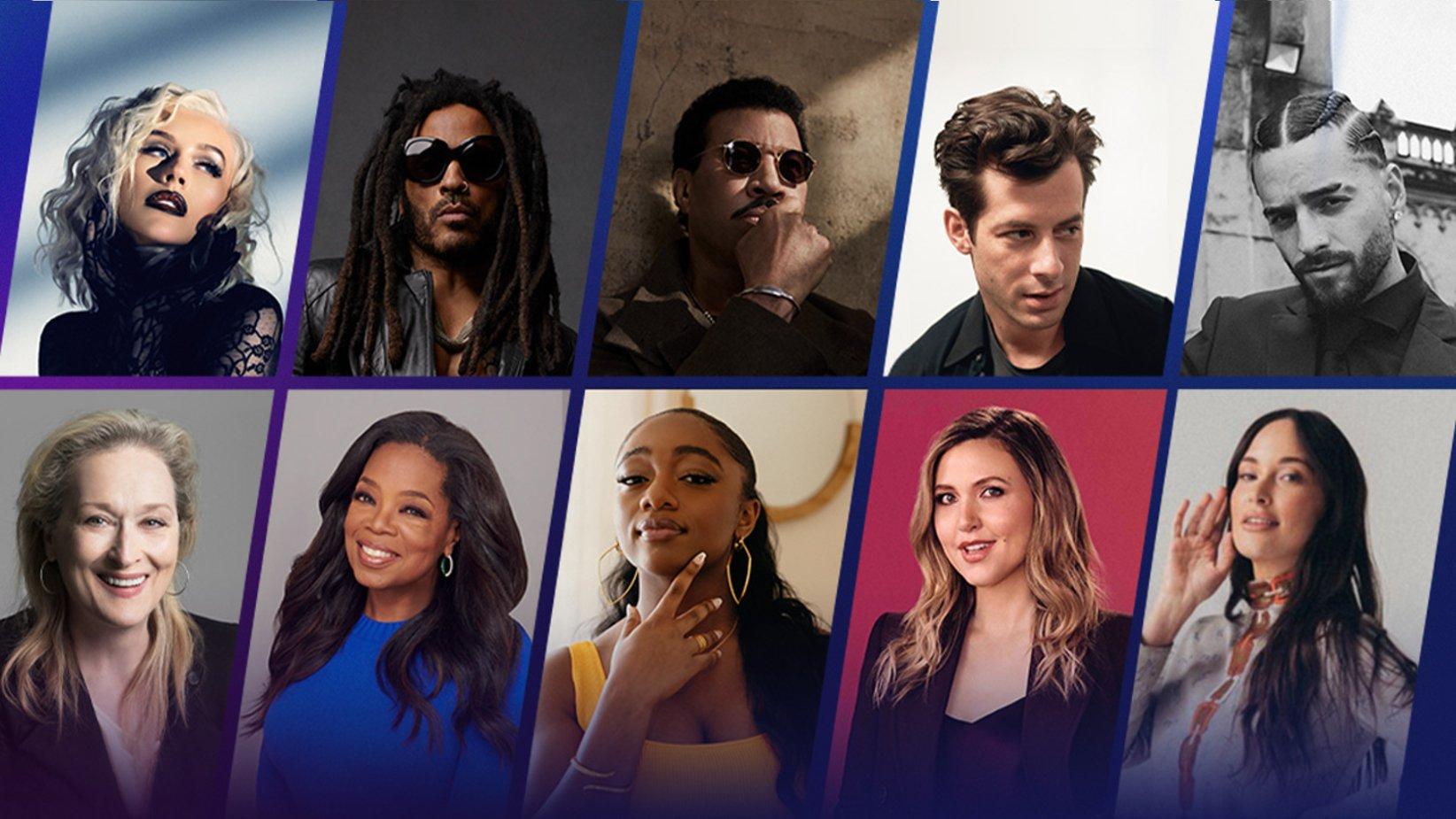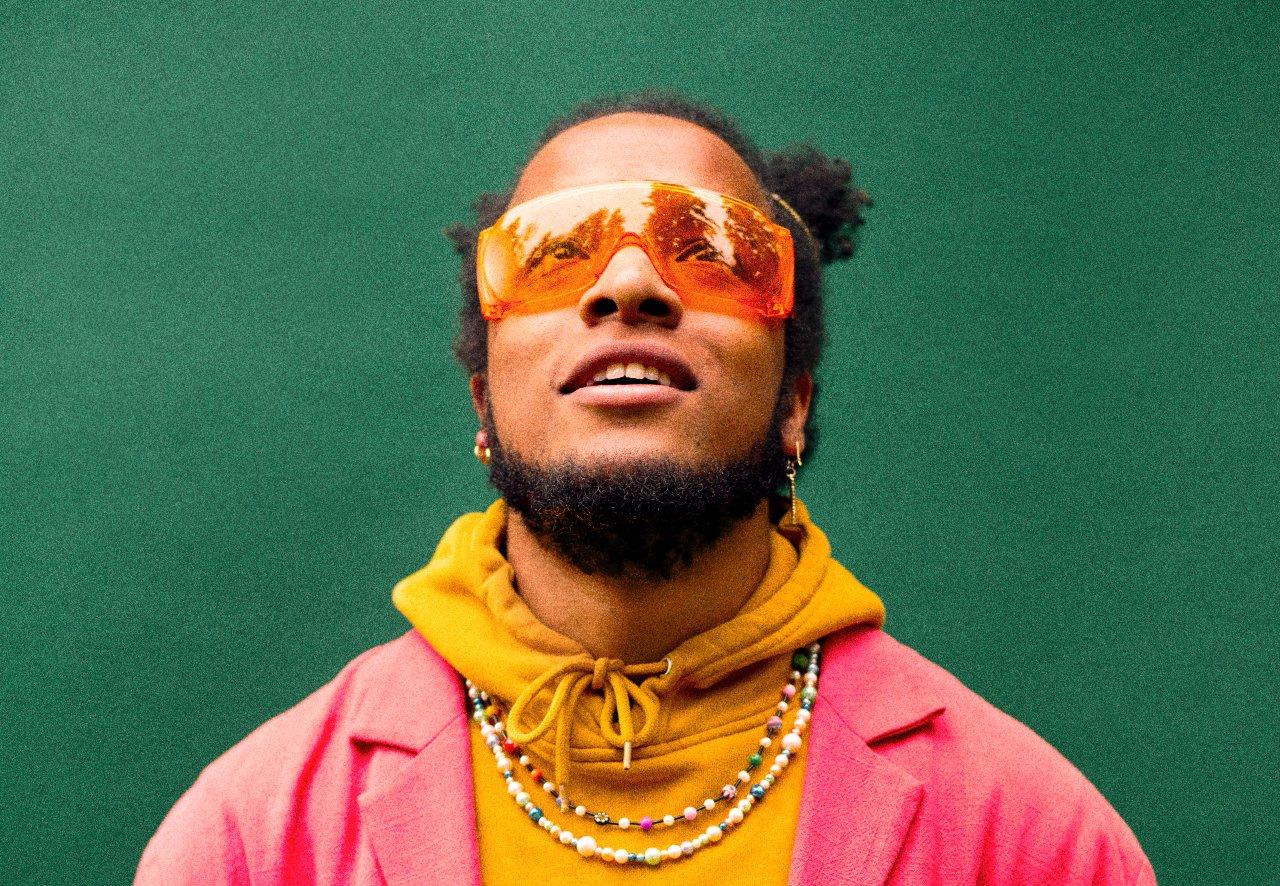Nobody can deny Herbie Hancock is a jazz artist, but jazz cannot box him in. Ditto Quincy Jones; those bona fides are bone deep, but he's changed a dozen other genres.
Cautious Clay doesn't compare himself to those legends. But he readily cites them as lodestars — along with other genre-straddlers of Black American music, like Lionel Richie and Babyface.
Because this is a crucial lens through which to view him: he's jazz at his essence and not jazz at all, depending on how he wishes to express himself.
"I'm not really a jazz artist, but I feel like I have such a deep understanding of it as a songwriter and musician," the artist born Joshua Karpeh tells GRAMMY.com. "It's sort of inseparable from my approach to this album, and to this work with Blue Note."
Karpeh is talking about, well, KARPEH — his debut album for the illustrious label, which dropped in August. In three acts — "The Past Explained," "The Honeymoon of Exploration," and "A Bitter & Sweet Solitude," he casts his personal journey against the backdrop of his family saga.
As Cautious Clay explains, the title is a family name; his grandfather was of the Kru peoples in Liberia. "It's a family of immigrants. It's a family of, obviously, Black Americans," he notes. "I just wanted to give an experience that felt concrete and specific enough — to be able to live inside of something that was a part of my journey."
On KARPEH, Cautious Clay is joined by esteemed Blue Note colleagues: trumpeter Ambrose Akinmusire, saxophonist Immanuel Wilkins, vibraphonist Joel Ross, guitarist Julian Lage, and others.
Vocalist Arooj Aftab and bassist Kai Eckhardt — Karpeh's uncle — also enhance the proceedings. The result is another inspired entry from Blue Note's recent resurgence — one lyrically personal and aurally inviting.
Read on for an interview with Cautious Clay about his signing to Blue Note, leveling up his recording approach, and his conception of what jazz is — and isn't.
This interview has been edited for clarity.
Tell me about signing to Blue Note Records, and the overall road to KARPEH.
I kind of got connected to Don [Was, the president of Blue Note] through a relationship I had with John Mayer, who had, I guess, connected Don to my music.
Don reached out via email probably a year ago, and so we connected over email. And I had sort of been in a situation where I was like, OK, I want to do something different for this next project. We kind of met in the middle and it just made a lot of sense based on just what I wanted to do, and then what they could potentially kind of work with on my end.
So, [I was] just recording the album in six days, and doing a lot of prep work beforehand and getting all these musicians that I really liked to be able to work on it. It was just a really cool process to be able to unpack that with Blue Note.
That's great that you and Mayer go back.
Yeah, man, we have a song. We worked on each other's music a little bit together. The song "Carry Me Away" on his [2021] album [Sob Rock] I actually worked on, and then we did a song together called "Swim Home" that I released back in 2019.
You said you wanted to "do something different." What was the germ of that something?
I felt like it could be interesting to do a more instrumental album, or something that felt a little bit more like a concept album, or more experimental. I wanted to be more experimental in my approach to the music that I love.
I wanted to call it a jazz album, but at the same time I didn't, because I felt like it wasn't; it was more of an experimental album.
But I felt like calling it jazz in my mind kind felt like a free way to express, because I think of jazz much more as a philosophy than necessarily a genre.
So, it was helpful for me in my mind to be able to like, OK, let me completely deconstruct my conception of the music I make and how I can translate that music.
And then it eventually evolved into a story about my family and about American history to a certain extent in the context of my family's journey, and then also just their interpersonal relationships. That sort of made itself clear as I continued to write and I continued to delve deeper into the process.
Not that KARPEH ended up being instrumental. But instrumental records are lodestars for you? I'm sure that blurs with the Blue Note canon.
There's a lot of different stuff. There was that red album that Herbie Hancock released [in 1978, titled Sunlight] that I really liked. "I Thought It Was You" was super inspirational — sonically how they arranged a lot of that record.
Seventies jazz fusion was an overall influence. I felt inspired by the perfect meld of analog synthesizers, and then also obviously organic instruments like horns and guitars of that nature. So I wanted to create something that felt like a contemporary version of what could be a fusion record to a certain extent.
Any specific examples?
Songs like "Glass Face," for example, are pretty fusion-y, but also very just experimental in a way that doesn't feel like jazz, even.
My uncle [Kai Eckhardt] is a pretty big-time bass player, and he played on "Glass Face." I just was like, OK, dude, do your thing, and he just did this sort of chordal bass solo. Then, I did all these harmonies over top of the song.
And then, Arooj Aftab is a really good friend and musical artist; she was able to work off of that as well. So, it was an interesting journey to make a lot of these songs and sort of figure out how they all fit together.
How did you strike that balance between analog and synthesized sounds?
I recorded most of this album at a studio, which is very different for me.
I don't normally do that. I use a lot of found sounds like drums and stuff that I've either made or sampled, but I did all of the drums and bass and upright and electric guitars we'd recorded at a studio called Figure 8 in Brooklyn. That was the backbone for a lot of the music that I created for the album.
Then, I took it back home to my home studio. After we had recorded all of the songs, I essentially had some different analog synths and things that I wanted to add into it either at the studio that I worked at or my own personal studio, which happens to also be eight blocks [away] on the same street away.
I struck a balance just mostly with it in the context of working at a very formal studio and then having an engineer and just getting sounds that I wanted that could be organic and more specific in that way. And also using some of the synths they had.
In terms of the approach, I kind of wanted it to be different. And so part of that was just being at more of a formal studio and having an engineer and overseeing the overall process outside of just being inside of my Ableton session.
Tell me more about the guests on KARPEH.
I knew Immanuel through a couple of mutual friends, and he has a certain sort of bite to his sax playing that I felt was so juxtaposed to my sax playing.
And same with Ambrose. I feel like his trumpet style couldn't be more esoteric and out, in the context of how he approaches melodies. It's almost in some ways like, Whoa, I would never play that way.
They're also soloists, and conceptually for me, the idea of being in isolation or being in bittersweet solitude was conceptually a part of the last part of the album. They as soloists have so much to offer that I feel like I can't do and I don't possess.
So, I wanted to have them a part of this album, to demonstrate that individuality within the context of what it takes to make a song.
Julian is just a beautiful and spirited man, a beautiful guitar player. I've liked his sound for a while. I think it was back in 2015 when I first heard him; he had a couple of videos on YouTube that I thought were just super gorgeous.
I feel like he just has this way of playing that's folky. Also, it's jazz in the context of his virtuosic playing style, but it's also not overbearing. I felt like as a writer and as a musician, it would be a really great connecting point for a few of the more personal songs on the record.
And then my uncle Kai as well, — he's not on Blue Note, but he used to play with John McLaughlin and run bass clinics with Victor Wooten and Marcus Miller back in the early 2000s. Dude is a real heavy hitter, and he happens to be my uncle, so it's just cool to be able to have him on the record.

*Cautious Clay. Photo: Meron Menghistab*
With KARPEH out, where do you want to go from here — perhaps through a Blue Note lens?
I really love a lot of the people there, and I feel like this could be the first of many. It's also a stepping stone for me as an artist.
I feel really connected to the relationship I have, and our ability to put this out. It's hard to say what exactly the future holds, but I am genuinely excited for this album. I feel excited to be able to put out something so personal and so connected to everything that sort of made me, in a very concrete way.
From what I understand, this is a one-time thing, but it could potentially be two. It depends, obviously. I'm very open-minded about it. I'd love to keep the good relationship open and see where things go.
I really have enjoyed the process and I feel like this next year is going to be something interesting. So, we'll see.
On Her New Album, Meshell Ndegeocello Reminds Us "Every Day Is Another Chance"









